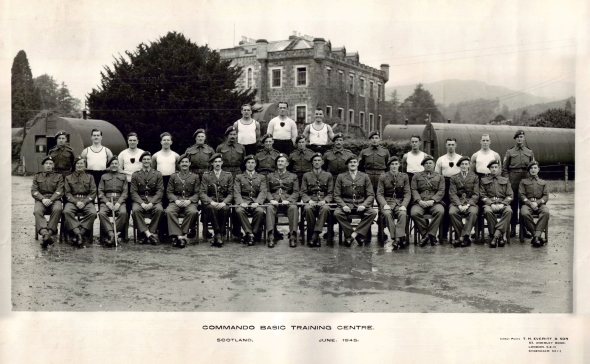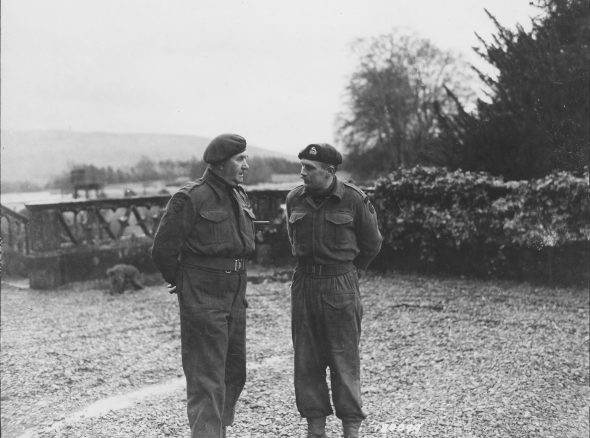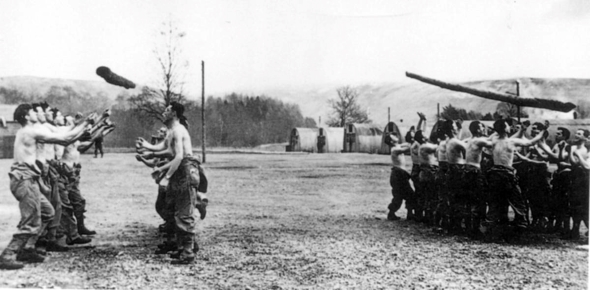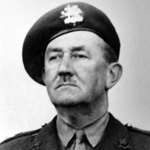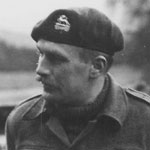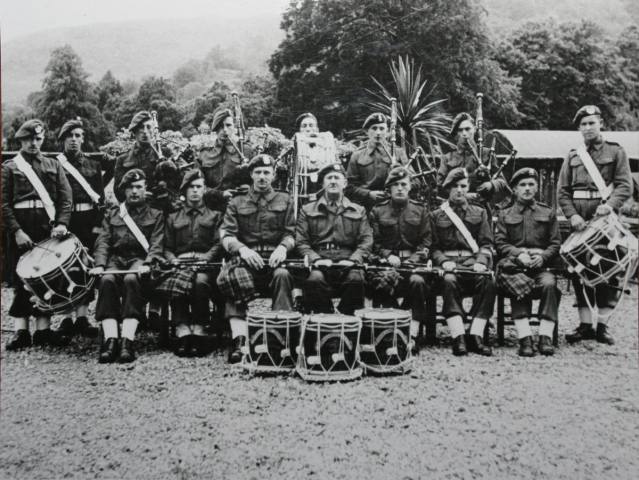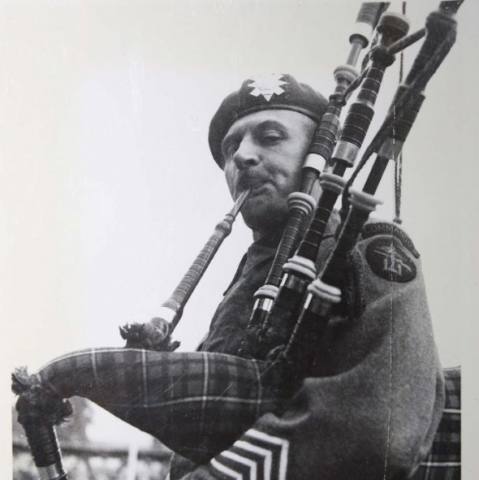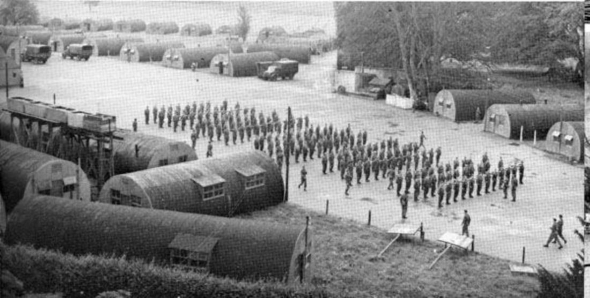
'Commando Basic Training Centre'
The Commando Depot at Achnacarry, redesignated as the Commando Basic Training Centre (CBTC), was regarded as one of, if not, the finest of all the Allied special training centres established in the Second World War.
Its reputation was widespread and held in the highest regard by all the Allies, for not only were soldiers and marines of the British forces trained there, but also those from the USA, France, Holland, Belgium, Poland, Norway, and surprisingly, some Germans. These were the ‘Free’ Germans and included Jews who had escaped the tyranny in their own country. Many other Units also used the facilities of Achnacarry. A list of the Courses can be found in our Gallery here [Courses at the CBTC].
The grounds and castle of Achnacarry was the seat of Sir Donald Walter Cameron of Lochiel, Chief of the Scottish Clan Cameron, who in June 1940 gave hospitality to No.1 Independent Company.
Commando training was not centralised at this time with each individual Commando unit responsible for their own training. In December 1940, Achnacarry, as well as Achdalieu Lodge, were officially brought into use as part of the the new Training and Holding Wing* for the main Special Training Centre (S.T.C.) at Lochailort and remained as such for the next year. A Training Centre was also operating at Inverary.
STC Lochailort was however scheduled to be closed. A need had been seen to centralise all commando training with a Commando Course that everyone would have to pass. Thus in December 1941 Achnacarry was re-designated as The Commando Depot, and passed under the authority of the Special Service Brigade.
Around the drill square hard asphalt now replaced the green lawn of the Castle. This square was surrounded by austere Nissen huts with their corrugated iron sides and roofs. These were the accommodation huts, each housing between 25 and 40 men, and also used as dining 'halls', washing rooms, and the NAAFI canteen. Occasionally these were complimented by Bell tents when additional accommodation was required. Achnacarry was now the Commando Basic Training Centre (C.B.T.C.), however we have found references to the old Depot name still being used long after.
In his book "It had to be Tough" Major James Dunning, who served on the staff at the CBTC for a period, states the following, "Normal intakes of trainees were allocated to one of the three training Commandos: Keyes, Haydon or Sturges, named after pioneers of Combined Operations and the Commandos. Admiral Sir Roger Keyes, our first beloved boss, and his son Geoffrey, who won the first Commando VC; General Haydon, the original commander of the Special Service Brigade and leader of the Lofoten Islands Raid; General Sturges, a Royal Marine, who after the Madagascar operation became the first overall commander of the Commando Group of four Commando Brigades.
Much of the PT consisted of agility and strengthening exercises, and teaching the drills and skills of tackling obstacles. All the equipment and obstacles were home made at Achnacarry by the staff. The photo depicts trainees using logs, each about 15-20 feet long, as part of that training. The logs were heaved, hurled in the air, and caught in a variety of different improvised strengthening exercises, demanding in addition, plenty of team work and cooperation.
More can be read about other areas of training in the pages to follow.
It would be remiss not to mention more about the man tasked with organising and controlling such demanding training, Lieutenant Colonel Charles Vaughan. Major Jimmy Dunning, No.4 Commando and CBTC, wrote " A Veteran of the First World War and the Retreat from Mons in 1914. In the inter war years he graduated from Drill Sergeant to RSM, but he was much more than just a bawling barrack square man, although he could do that if needed. His obvious military potential as an officer was recognised and he was duly commissioned.A Londoner by birth and proud of it, Lieutenant Colonel Vaughan's standards for soldiers and soldiering were set by his long service in war and peace. He accepted nothing but the best, whether it be in fitness, training, weaponry and musketry, fieldcraft and tactics, drill and turnout, or even in the more apparently mundane matters of administration which included feeding and hygiene.
Together all these factors made the 'whole' - and the self disciplined and reliant Commando soldier 'fit to fight' and 'fighting fit' with high morale, willing and capable of tackling any military task, under any circumstances, and against any odds."
Primary Sources: Donald Gilchrist, CBTC Instructor and author of Castle Commando; James Dunning, CBTC Instructor and author of It Had To Be Tough; Hilary St. George Saunders author of The Green Beret (The story of the Commandos 1940-1945.); No 10 Independent Company War Diary National Archives ref. WO.218/17]
© Commando Veterans Archive 2014
* Follow this link to read the No 10 Independent Company history. [relevant to the early timeline.]
Follow this link to view the dates of Course Intakes at Achnacarry.
Read on from below right ......
VAUGHAN, Charles Edward (Lt Col)
Charles Edward Vaughan, born 1893, was originally attached to No.7 Commando. The then Major Vaughan took over as Acting Second in Command of No.4 Commando on 30 June 1941 replacing Major M.G. Kerr before taking up his role as the Commandant of the newly formed Commando Depot (CBTC) at Achnacarry.
On June 6th 1964 during the ceremonies in Ouistreham commemorating the 20th Anniversary of the D Day Landings, the Commando Memorial window at the church of St Sampson was unveiled by Lieut. Colonel Vaughan. The window had been donated by the Association to the people of Ouistreham as a token of appreciation for their continued hospitality and kindness to Commando Veterans attending D Day Anniversaries. In January 1965 Lieut. Colonel Charles Vaughan OBE represented the Association at the funeral service in St Paul's Cathedral for Sir Winston Churchill.
Donald Gilchrist author of 'Castle Commando' wrote :
Read on from below right.....
COCKCRAFT, William Gordon La Trobe
- The IWM have an Oral Interview (catalogue number 3935) recorded with Major William Gordon La Trobe Cockcraft covering the period he served with the Royal Berkshire Regiment and the training of the 4th Bn King's African Rifles in Uganda, Kenya and East Africa, 1938-1942. (He received a Mention in Despatches for distinguished service during this period*). At the very end of the last reel (reel 2) Major Cockcraft states he left them to volunteer for the Commandos [3] .
- 13 August 1949 Major Cockcraft retired from service [4].
'Lt. Col. Vaughan confers with his 2 i/c, Major Cockcraft', image
[Caption] "Lt. Col. C.E. Vaughan, Commandant of a Commando Depot confers with this Second in Command, Major Peter Cockraft* on the day's schedule for a Ranger Unit. Speanbridge, Scotland."
CBTC Demonstration Troop
CBTC Pipe Band and Demonstration Troop
- More photos in our Gallery [view.....].
